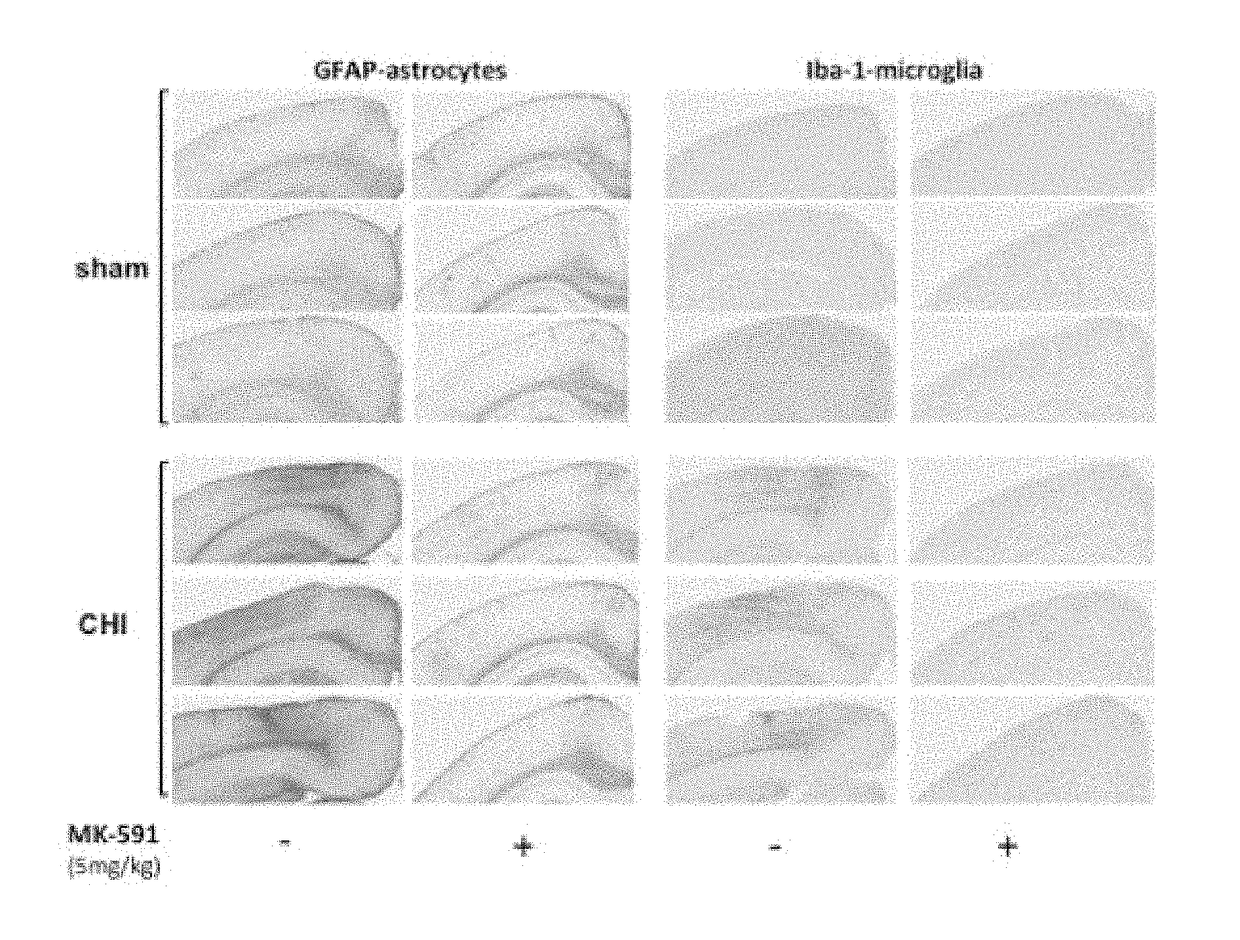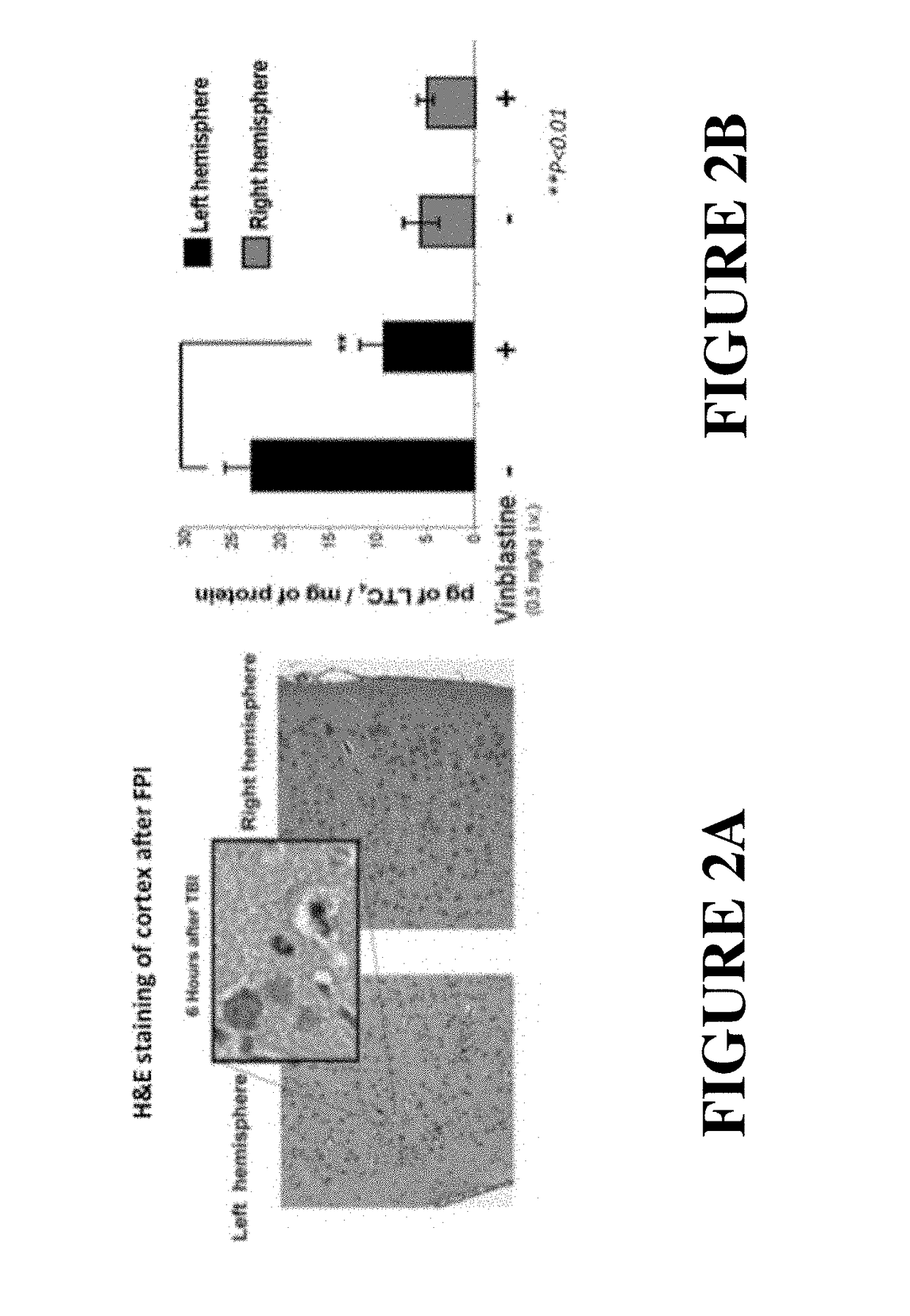Use of flap inhibitors to reduce neuroinflammation mediated injury in the central nervous system
a neuroinflammation mediated injury and flap inhibitor technology, applied in the direction of nervous disorders, pharmaceutical delivery mechanisms, medical preparations, etc., can solve the problems of neurological dysfunction, no treatment that mitigates brain damage, etc., to block or attenuate secondary brain damage, block or prevent secondary brain damage, and prevent cell death.
- Summary
- Abstract
- Description
- Claims
- Application Information
AI Technical Summary
Benefits of technology
Problems solved by technology
Method used
Image
Examples
Embodiment Construction
[0046]The following abbreviations and terms are used throughout the specification and claims and have the defined meanings unless noted otherwise: arachidonic acid (AA); 5-lipoxygenase (5-LO); blood-brain barrier (BBB); Evan's Blue (EB); field excitatory post-synaptic potential (fEPSP); 5-lipoxygenase activating protein (FLAP); fluid percussion injury (FPI); long-term potentiation (LTP); radial arms water maze (RAWM); reverse-phase liquid chromatography coupled to tandem mass spectrometry (RP LC-MS / MS); traumatic brain injury (TBI); human whole blood (HWB); the term animal is a general term meant to include all members of the animal kingdom, including all mammals, such as, humans, domesticated animals and undomesticated animals; closed head injury (CHI) especially in reference to the mouse model described in the present specification; Hematoxylin and Eosin (H&E); glial fibrillary acidic protein (GFAP); ubiquitin carboxy-terminal hydrolase L-1 (UCHL-1), myeloperoxidase (MPO), ionized...
PUM
| Property | Measurement | Unit |
|---|---|---|
| diameter | aaaaa | aaaaa |
| pressure | aaaaa | aaaaa |
| velocity | aaaaa | aaaaa |
Abstract
Description
Claims
Application Information
 Login to View More
Login to View More - R&D
- Intellectual Property
- Life Sciences
- Materials
- Tech Scout
- Unparalleled Data Quality
- Higher Quality Content
- 60% Fewer Hallucinations
Browse by: Latest US Patents, China's latest patents, Technical Efficacy Thesaurus, Application Domain, Technology Topic, Popular Technical Reports.
© 2025 PatSnap. All rights reserved.Legal|Privacy policy|Modern Slavery Act Transparency Statement|Sitemap|About US| Contact US: help@patsnap.com



